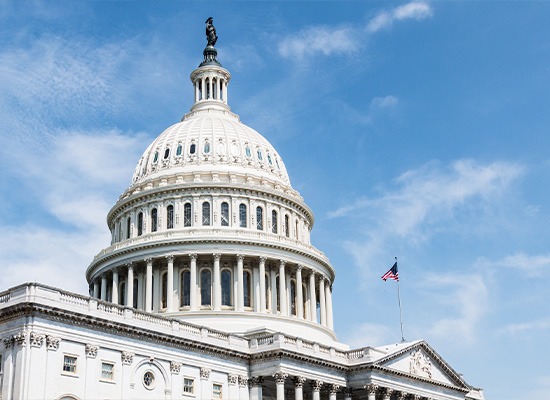 Contact
About Us
Articles
Home
Contact
About Us
Articles
Home

The Setting Every Community Up for Retirement Enhancement (SECURE) Act 2.0, signed into law in December 2022, introduced significant changes to individual retirement accounts (IRAs) and other retirement plans. Modifications effective in 2025 and beyond are impacting retirement savings strategies, and there are implications for your financial future. SECURE Act 2.0 builds upon its predecessor, aiming to enhance retirement security for millions of Americans. By introducing new provisions and modifying existing rules, the act seeks to address the challenges faced by individuals in saving for retirement.
The key changes include increased catch-up contribution limits, Roth treatment for certain catch-up contributions, automatic enrollment in retirement plans and the introduction of the saver's match. These modifications significantly alter the landscape of retirement savings, affecting both IRAs and employer-sponsored plans.
One of the most notable changes effective in 2025 is the increase in catch-up contribution limits for individuals aged 60-63. For workplace plans like 401(k)s, the catch-up contribution limit increases to the greater of $10,000 or 150% of the regular catch-up amount for 2024.
While this change doesn't directly affect IRAs, it represents a significant opportunity for older workers to accelerate their retirement savings in the years leading up to retirement. This increase could potentially influence how individuals allocate their savings between employer-sponsored plans and IRAs.
s.jpg)
As of 2025, participants in employer-sponsored plans whose wages exceed $145,000 in the previous year are required to make all catch-up contributions to Roth accounts. This change doesn't directly impact IRAs but could influence overall retirement savings strategies.
The shift to Roth treatment for these catch-up contributions means that high-income earners will need to pay taxes on these contributions upfront. However, it also provides an opportunity for tax-free growth and withdrawals in retirement, aligning with the benefits of Roth IRAs.
While not directly affecting IRAs, the requirement for new 401(k) and 403(b) plans to automatically enroll participants starting at a 3% contribution rate could have ripple effects on overall retirement savings behavior. This change aims to increase participation in workplace retirement plans and foster better savings habits.
For individuals who may have previously relied solely on IRAs for retirement savings, this automatic enrollment could prompt a reevaluation of their savings strategy. It may lead to a more balanced approach between employer-sponsored plans and IRAs.
One of the most exciting changes will be the introduction of the saver's match replacing the saver's credit in 2027. This federal matching contribution is available for eligible retirement accounts, including IRAs. It is a 50% match on up to $2,000 of contributions, with the match phasing out based on income. The incentive could make IRAs even more attractive for low- and moderate-income savers, potentially leading to increased contributions and improved retirement readiness.
According to the IRS: “Unlike the existing saver’s credit, a nonrefundable tax credit that will be replaced by saver’s match contributions, the saver’s match contribution is paid by Treasury to a 401(k)-type plan or non-Roth IRA designated by an individual claiming the saver’s match contribution. The amount of an individual’s saver’s match contribution depends on the individual’s income or joint income level. For example, for a married individual filing jointly, the saver's match contribution phases out completely at a joint income of $71,000, and, for a single filer, the saver’s match contribution phases out completely at an income of $35,500.”

With the changes effective in 2025, employers are allowed to make matching contributions to 401(k) plans and similar workplace plans based on employees' qualified student loan payments. While this doesn't directly affect IRAs, it could significantly influence overall savings behavior and IRA contribution decisions.
For young professionals struggling to balance student loan repayment with retirement savings, this provision could provide a much-needed boost to their retirement accounts. It may also impact how individuals allocate their savings between employer-sponsored plans and IRAs.
The SECURE Act 2.0 also allows employers to make nonelective contributions to SIMPLE IRAs of up to 10% of employee compensation, up to $5,000. This expansion provides more flexibility for small businesses in designing their retirement plans and could make these IRA-based plans more attractive for both employers and employees.
The SECURE Act 2.0 brings significant changes to RMDs, affecting how retirees manage their retirement accounts in later years. One of the most notable modifications is the gradual increase in the age at which RMDs must begin. Previously set at 72, the age will incrementally rise to 75 by 2033. This change provides retirees with additional flexibility, allowing their retirement savings more time to grow tax-deferred.
In a move to reduce the burden on retirees who may inadvertently miss an RMD, the act also lowers the penalty for failing to take RMDs. The previous steep penalty of 50% of the amount not taken has been reduced to 25%. Furthermore, if the mistake is corrected promptly, the penalty can be further reduced to just 10%. This more lenient approach acknowledges the complexities of retirement account management and offers some relief to retirees navigating these rules.
Another significant change aligns Roth accounts in employer-sponsored plans with Roth IRAs by eliminating RMDs for these accounts. This modification simplifies retirement planning for many and enhances the appeal of Roth options within 401(k) and similar plans. It allows retirees more control over their tax-advantaged savings and potentially enables more effective estate planning strategies.
These RMD changes have important implications for retirement planning strategies. The delayed RMD age could influence decisions about when to start drawing from retirement accounts, potentially allowing for more strategic withdrawals to manage tax liabilities. Additionally, the alignment of Roth account rules across different plan types may prompt a reassessment of the role of Roth contributions in overall retirement savings strategies.

Because of the changes effective in 2025, it's essential to consider how they will impact your overall retirement savings strategy. Here are some key considerations:
As you discover the changes brought by the latest phase of SECURE Act 2.0, it's crucial to consider a holistic approach to retirement income planning. This approach should consider not only the new opportunities for savings but also strategies to reduce exposure to market risk and provide guaranteed streams of income.
Fixed and indexed annuities can play a vital role in this holistic strategy. These financial products offer the potential for steady, guaranteed income streams in retirement, helping to mitigate the risks associated with market volatility. By combining the enhanced savings opportunities provided by the SECURE Act 2.0 with the security of annuities, you can create a more robust and resilient retirement plan.
It's important to consider how new provisions of the act can work in tandem with products like annuities to create a comprehensive retirement income strategy. This balanced approach can help ensure that you're not only maximizing your savings but also protecting your retirement income against market uncertainties.
The SECURE Act 2.0 marks a pivotal moment in retirement planning, offering a range of new opportunities and challenges for savers across all income levels. While these changes present new possibilities, they also underscore the importance of proactive planning and regular review of retirement strategies. The act's provisions encourage a more personalized approach to retirement savings, recognizing that one size doesn't fit all when it comes to financial planning for the future. Ultimately, the SECURE Act 2.0 provides a framework for building a more secure financial future. By staying informed, embracing new opportunities and maintaining a balanced approach to savings and income planning, you can work toward a retirement that aligns with your goals and provides peace of mind. Remember, a well-rounded approach that combines increased savings, tax-advantaged growth and guaranteed income streams is key to a comfortable and secure retirement.
Alliance America is an insurance and financial services company dedicated to the art of personal financial planning. Our financial professionals can assist you in maximizing your retirement resources and achieving your future goals. We have access to an array of products and services, all focused on helping you enjoy the retirement lifestyle you want and deserve. You can request a no-cost, no-obligation consultation by calling (833) 219-6884 today.


